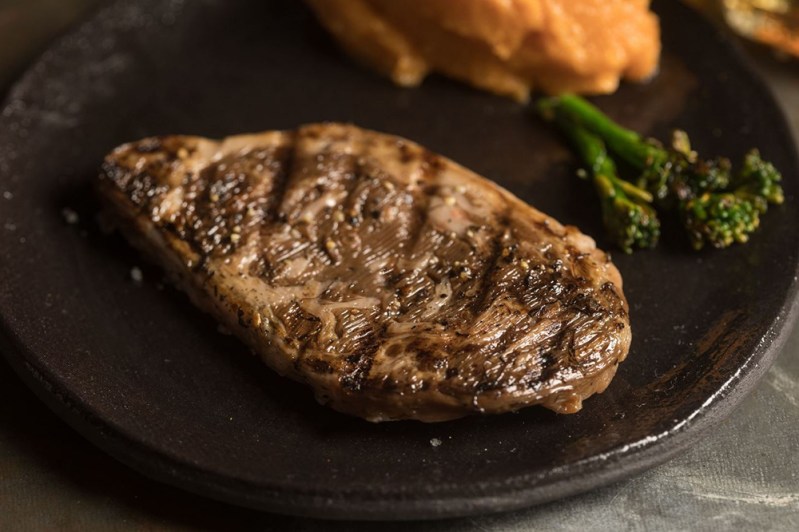First, there was Dolly, the cloned sheep. Now, we have 3D-printed steaks.
As the Washington Post reports, the breakthrough happened earlier this week by way of an Israeli company, Aleph Farms. It was assembled using a live culture made up of animal cells. And it’s a new enough experimental process that it has yet to be certified any major governing body and therefor is not formally recommended for eating, at least in this country.
Related Reading
- How to Cook a Steak in the Oven
- Where to Order Quality Meat Online
- The Best Cuts of Steak to Buy in 2021
The questions begs: Would you eat it? The steak itself isn’t the most flattering cut of meat but the movement is interesting and will only gain momentum. We already know about the significant toll the industrial food system takes on natural resources and the environment, as well as the fate of the animals involved. Plant-based meats have already slid in and offered a tasty alternative that’s easier on the planet and more humane. Alt-meats produced by 3D printers are poised to be next, with some countries hoping to have products on the market by next year.

There will almost certainly be growing pains. All you have to do is look at genetically modified organisms (so-called Frankenfood) to see how we tend to cringe at lab-created foods. But the plusses of this new frontier could be many, including a longer shelf-life for the meats as well as more consistent quality. Researchers are able to dial-in the recipe so to speak by adjusting collagen and tissue levels. It sounds a little gross on the surface, but it could end up being a sure-fire way to produce the perfect T-Bone or porterhouse, over and over again.
The printed protein is far from the oddest thing created by a 3D printer over the last several years. The technology has produced everything from bikinis to replica engagement rings. Even 3D-printed weapons had a moment not too long ago. It’s conceivable that one could print up a good fork and steak knife to go with their meat if so inclined.
What’s next? Other companies are already hard at work on bio-printing seafood, a resource subject to depletion and its own environmental and ethical concerns. Regulatory bodies like the FDA tend to work slowly, but they will test and review this new category of meats and likely give them the green light over the next year or two. Look out for start-ups flexing alt-pork, alt-chicken, and more. As the technology improves, the cuts of meat will no doubt look and taste and better, perhaps reaching a point where you simply could not differentiate them from the real thing in a blind taste test.
For now, the above steak looks chewy and a bit gristly at best. This writer would probably only eat it with a healthy helping of steak sauce and a large glass of wine to wash it down. I’m not against the process by any means, just the appearance of that thing on the cutting board. We’ll have to wait and see what comes down the printer pipeline in the not-too-distant future.


